Rosieres RHD 7 SPN Handleiding
Bekijk gratis de handleiding van Rosieres RHD 7 SPN (20 pagina’s), behorend tot de categorie Afzuigkap. Deze gids werd als nuttig beoordeeld door 77 mensen en kreeg gemiddeld 3.9 sterren uit 39 reviews. Heb je een vraag over Rosieres RHD 7 SPN of wil je andere gebruikers van dit product iets vragen? Stel een vraag
Pagina 1/20

1B6.
INSTRUCTIONS FOR INSTALLATION AND USE
MONTAGE- UND GEBRAUCHSANWEISUNG
INSTRUCTIONS POUR L'INSTALLATION ET L’UTILISATION
ISTRUZIONI PER L'INSTALLAZIONE E L’USO
INSTRUCCIONES PARA INSTALACIÓN Y USO
AANWIJZING VOOR GEBRUIK EN INSTALLATIE
B6.

2B6.
ENGLISH
DESCRIPTION
This appliance is equipped with a completely automatic system (Advanced Sensor Control) capable to
manage all the functions of your hood. Thanks to the ASC, the air in the kitchen is costantly clean and odour
free without any manual intervention. The advanced sensor catches all sort of vapours, smokes and odours
caused by the cooking process. The ASC also captures an abnormal presence of GAS.
The hood may be installed in the filtering or the ducting version.
Filtering version (Fig.1): The hood aspirates the kitchen air saturated with fumes and odours, purifies it through the
grease filters and charcoal filters and returns clean air into the room. For constant efficiency, the charcoal filters must be
replaced periodically. The charcoal filters are not supplied.
Ducting version (Fig.2): The hood aspirates the kitchen air saturated with fumes and odours, passes it through the
grease filters and expels it to the outside through an outlet pipe. With this version the charcoal filters are not required.
Decide from the outset on the type of installation (filtering or ducting). For greater efficiency, we recommend you install the
hood in the ducting version (if possible).
INSTALLATION
To facilitate installation, before starting remove the grease filter/s: press inward on the clamp at the handle and pull the filter
downward (Fig.3).
Installation on the wall (Fig.4): Using the special drilling template, drill the required holes in the wall. As previously specified
in the chapter “Warning” remember there must be a minimum of 650 mm between the bottom edge of the hood and the stop of
the stove. Secure the metal bracket (B) to the wall using the screws and plugs (bracket, screws and plugs are all supplied with
the unit). Use the 2 triangles cut into the bracket to position it precisely along the vertical axis of the hood. Then set the hood onto
the bracket. Adjust the horizontal position, shifting the hood to the right or left as needed lining it up with the wall units. If the height
of the hood also requires adjustment, use the special regulation screws (V) (supplied). Once regulation has been completed, finish
securing the hood with 4 more screws (M): mark the points for the 4 holes on the wall, remove the hood and drill (8mm diameter
holes); then use the plugs and screws to complete installation.
Installation with rear panel (Fig.5): The rear panel is positioned at the top of the stove, flush against the wall. Rest the lower
edge of the panel behind the stove and anchor the upper edge to the wall using the two holes found on the panel. Insert the screws
and plugs provided (A). The unit is secured to the rear panel as though it were being installed on the wall: use the supplied metal
bracket (B) and the screws and plugs supplied with the panel.
Mount the plate of the electrical system fixing it with 3 screws and 2 metal washers (Fig.6).
Securing the extension pipes:
Basic installation requirements:
– Set the electrical power supply within the space covered by the decorative piping.
– If your unit is installed in an Exhaust hood or in a hood with outside motor, prepare the air exhaust hole.
When installing exhaust hoods and hoods with outside motor, to achieve the best possible conditions use an air exhaust pipe
that: is as short as possible, has a minimum of curves (maximum angle: 90°), is made of a material that complies with the standards
(which vary from nation to nation) and iv) is smooth on the inside. It is also advisable to avoid any drastic changes in pipe section
(diameter: 150 mm).
Adjust the width of the extension pipe support bracket (W) using screws A indicated in Fig.7. Then use the plugs and screws provided
to secure it to the ceiling. Make certain it is aligned with the hood. For filtering hoods, the air exhaust grids are positioned in the
upper part (Fig.8). For exhaust hoods, turn the upper pipe over so that the air exhaust grid is in the lower section (Fig.9).
Exhaust hoods: Connect the hood flange to the exhaust hole in the wall/ceiling using a flexible pipe.
Plug in the hood. Insert the
extension pipes setting them on the hood; extend the upper pipe to the ceiling and secure with the 2 screws (G) (Fig.10).
Filtering hood: Secure the deflector to the upper pipe using the 4 special screws (provided) (Fig.11); hook up the flexible pipe
(diameter: 125) to the deflector. Install the reduction (provided) on the hood air outlet point (Fig.12). Take the 2 assembled extension
pipes and set them on the hood; extend the upper pipe to the ceiling and secure with the 2 screws (G) (Fig.10).
Extend the lower
pipe taping it in place and then connect the flexible pipe to the hood reduction. Plug in the hood. Extend the lower pipe downward
setting it against the hood. Install the carbon filter by pressing the 2 tabs on the filter down into the special housing (Fig.13) and
rotating upward.
OPERATION
Depending on the model, the unit is equipped with the following commands:
CONTROLS shown in Fig. 14:
P1 Switches LIGHTS on and off
P2 min and MAX LIGHT intensity
P3 Nothing happens when pressed with motor OFF. When pressed with motor ON decreases speed until switch-off. Kept
pressed for 2" with motor OPERATING, switches off motor and stores the speed.
P4 When pressed with motor OFF, switches on the motor at stored speed in switch-off or first speed phase When pressed with
motor ON, increases speed.
L1 and shows current speed (GREEN)
P5 Resets filter reset count with motor OFF. NOTE The filter timer is maintained even in the absence of power. With motor ON,
trigger TIMER 5'

3B6.
L2 Shows: 1) with motor off, the FILTER RESET IN RED, (30hours Steady LED, 120hours flashing LED)
2) In FLASHING GREEN the TIMER 5'
CONTROLS shown in Fig. 15:
P1) Lights OFF: If pressed, lights go off.
P2) Lights ON: If pressed, lights go on.
P3) OFF/- Motor: Speed drop until minimum speed is reached. If pressed for 2", motor switches off. If pressed for 2" with
FILTER RESET on HOUR count reset.
P4) ON/+ Motor: Starts motor and increases motor speed until top speed is reached
P5) ON/OFF: Switches Sensor off and on( AUTOMATIC or MANUAL mode). In Automatic mode, LED L2 is on and L1 shows
operating speed In Manual mode, LED L2 is off.
L1) 4 LEDs 4 GREEN LEDs. Indicate set speed
L2) 4 LEDs GREEN indicates AUTOMATIC mode OFF indicates MANUAL mode RED indicates Filter Reset
FILTER RESET: shown with Motor Off for 30": After 30h the LED L2 becomes steady RED. After 120h LED L2 becomes flashing
RED Reset by means of P3
SENSITIVITY: In manual mode, by pressing P5 and P4 together, sensitivity mode is entered. The set sensitivity is indicated by
the 4 green LEDs. By means of buttons P3(-) and P4(+) the desired sensitivity is set (fig.19/A). By pressing P5 the sensitivity can
be stored, with return to manual mode
CONTROLS shown in Fig. 16:
P1- Lights ON/OFF; filter alarm RESET: if held pressed down for about 2 seconds when the filter alarm is active, the
hour counter is reset. Filter alarm: after 30 hours the light button LED comes on and stays on for 30 seconds; after 120
hours it is activated for 30 seconds but with the LED flashing. The RESET is highlighted ONLY when the motor is OFF,
both in automatic and manual mode.
Automatic function: To activate the automatic function press P2, highlighted by the corresponding LED coming on; the
flashing LED indicates that the sensor is waiting for data. To set the sensitivity: in manual mode and with the motor off press P2
and P3 simultaneously; the sensitivity already set with the P3 or P4 or P5 LEDs is highlighted. To modify it, press P3 or P4 or P5
(MIN, MED, MAX), and again press P2 to store it. At this point, the desired sensitivity has been stored; press P2 again to
deactivate the automatic mode.
Manual function: When the LED P2 is off, you are in manual mode. Press P3 when in manual mode to turn on the motor
in 1st speed with the relevant LED on. Holding it down for 2 seconds, the motor is turned off. Press P4 to go to 2nd speed with
the relevant LED on and P5 to go to 3rd speed with the relevant LED on.
Grease filters: special attention must be given to the grease filters which must be periodically cleaned, whenever the grease
filter alarm trips. For instructions of the filter Alarm, refer to the Controls paragraph. Remove the filters as shown in para. 1 and
wash with neutral detergent.
Charcoal filters: if the filtering version appliance is used, the charcoal filters will have to be periodically replaced when the
charcoal filter alarm trips. For instructions on the filter Alarm, refer to the Controls paragraph.
Removing the charcoal filter/s: first of all, remove the grease filters; push the catch inwards (Fig.13) and remove the charcoal filter
from its case. Reposition a new charcoal filter of the same type inverting the operations.
Lighting: to change the halogen bulbs open the cover levering from the proper slots (Fig.17). Replace with bulbs of the same
type.
CAUTION: Do not handle glass bulb with bare hands. If, after replacing the halogen lights, these fail to work, allow the
appliance to cool and then interrupt power for a few seconds.
Product specificaties
| Merk: | Rosieres |
| Categorie: | Afzuigkap |
| Model: | RHD 7 SPN |
Heb je hulp nodig?
Als je hulp nodig hebt met Rosieres RHD 7 SPN stel dan hieronder een vraag en andere gebruikers zullen je antwoorden
Handleiding Afzuigkap Rosieres

14 December 2024

14 December 2024

14 December 2024

14 December 2024

14 December 2024

4 November 2024

31 Juli 2024

31 Juli 2024
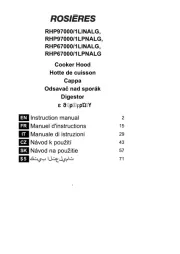
31 Juli 2024

31 Juli 2024
Handleiding Afzuigkap
- M-System
- Bellini
- Proline
- Windster
- Mepamsa
- Matrix
- Jocel
- JennAir
- Elba
- Bauknecht
- Eico
- Viking
- New World
- Asko
- Euromaid
Nieuwste handleidingen voor Afzuigkap
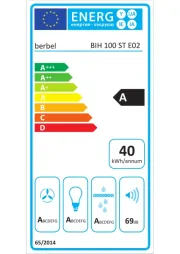
17 September 2025
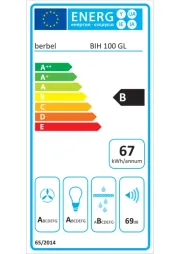
17 September 2025
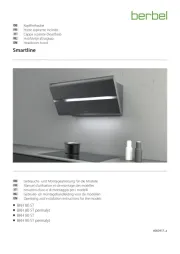
17 September 2025
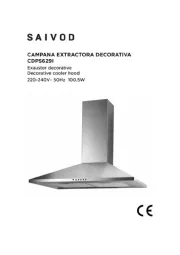
15 September 2025
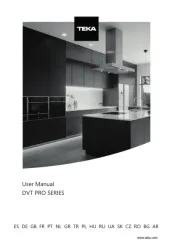
15 September 2025
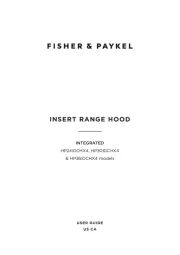
15 September 2025
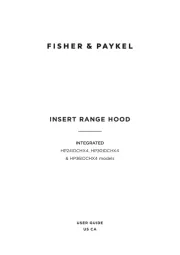
15 September 2025
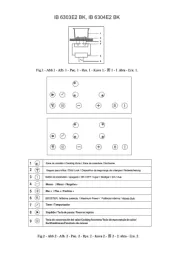
15 September 2025
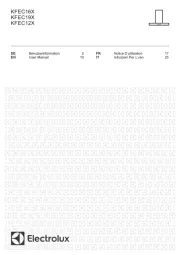
15 September 2025
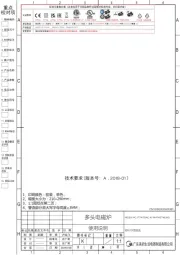
15 September 2025